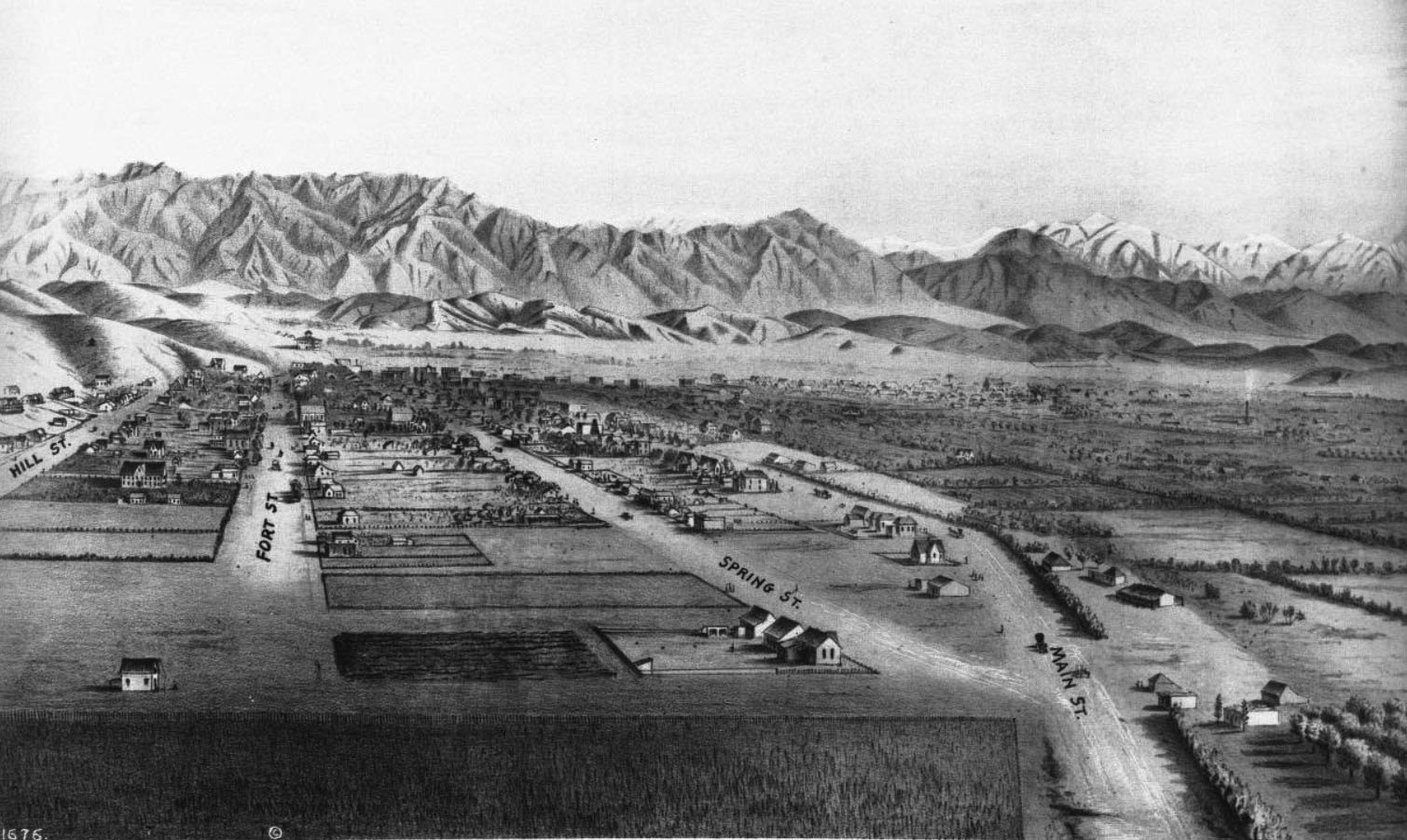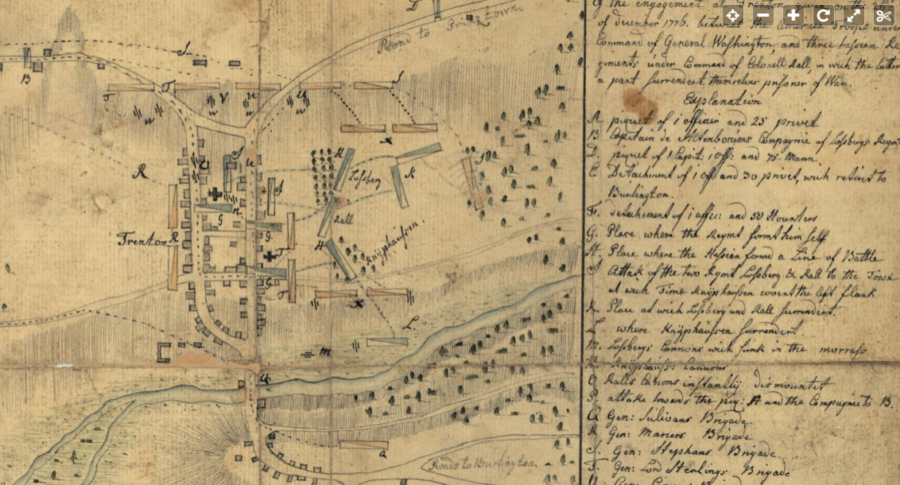TL;DR -- Concrete isn't something thought about with computers, except we know of one software package that used the name. But, we need to use concrete language and examples to hone intelligent approaches toward something that represents maturity. How to do that? We expect that New England and the US over time have plenty of examples. Real people doing real thngs. That will continue to be the case even as we see technology continue to expand and play havoc with stability, if we let it.
--
Last year, we had a post (
Three weeks) that looked at early travel across pieces of the U.S. This was in the vein of our recent report on
Knox's movement of tons of cannons from Fort Ticonderoga to Boston. His crew had to go two directions across New York and Massachusetts during winter months. And, this feat was accomplished during the time of the
Siege of Boston which was part of the American Revolution that occurred 250 years ago.
So, we are dealing with historic events which are of time and space. As a reminder, 100 years ago or so, Albert Einstein proposed a model of space and time that was confirmed and has been at the core of our model of the physical world. For the most part, that focus deals with cosmology though the science of physics has its quantum theory that has to deal with Einstein's equations of relativity. We can ignore all of the technical details and focus on some local events (explained below).
The considerations technically handled by Einstein apply across the board which is part of the complexity of life. Another bit of adjustment, though, came with computing. We have written a lot about that and will continue. Of late (the past three years), lots and lots of attention (perhaps, too much) has been put upon
GenAI/LLM. "AI" has been around since the '50s. The "Gen" part is 21st Century as is "LLM" which is the latest approach to handling language for input, control of the computer, and specifying output.
For instance, there are
ChatGPT (OpenAI) and
Gemini (Google) and many others. We have sampled a few of these but kept it brief. Why? The approach is heavily dependent upon using resources by design. This did not have to be. There have been more efficient methods demonstrated. From our experience, there was not much new offered by this approach as we will see, eventually.
Right now, consider this post and its graphics:
Deadly consequences. In this post, there is an appealing image with respect to our work. The first reaction concerns what can be learned. Did someone do new research and find a gem? Nope, in looking at the image with a critical eye, things pop out. The raft is wrong. Some of the horses are badly modeled. How many errors are there?
The point is that with this type of bad output, people can be fooled. On FB, one of the groups dealing with early LA (where our interest is DTLA and its
Bunker Hill neighborhood) has had many images that were obviously fake but not identified as such. One rule needed? Anything done by algorithm needs to be identified with respect to what we need for verifying provenance.
Note: Bunker Hill west in DTLA was named for the Bostonian mound of much fame. But, our interest is in the long reach of New England where LA provides us lots of examples. We like Bunker Hill since from the time of New Spain/Mexico to now, New England had a heavy influence. Several generations of buildings are represented in this area that pertain to a proper study of the history of the U.S.
So, now to the point of the post. This image I put together for the "
Three weeks" post. The gist of the matter is that a group traveling along the Sante Fe trail across Kansas would have taken three weeks to go from Indpendence MO to Fort Larnerd KS with the grind of daily travel.
Now, we will discuss each of the pieces of this image in terms of map and territory. Nowadays, advanced computing likes to demonstrate its prowess in modeling nature. Then, if that model is good, the computer can control something in the world. Take autopilot. This software can take off and land a plane. Now remember, involved is a lot more involved with this. We use "map" for the digital model in the computer and "territory" applies to the outside world. So, a control item on the wing of a plane would have means to feed back to the computer about its status and then take instructions from the computer to make some movement, say for a turn.
The recent visible demonstration of this is the auto-car that can drive itself. Some do not even have a steering wheel. In the case that human input is needed, it can be handled by interfaces common with computer games, such as joy sticks.
There is something called the map-territory problem (
Wikipedia; John's
Truth Engineering site). In the auto-car, too much reliance on interpolation between points on the computer could result in it not knowing the proper position of the car. There are many ways to discuss this, but, in general, when people are dealing with "smart" systems, it is very easy to forget where some data originates. Handling critical conditions in the world would put more emphasis on the local condition. But, what if a person is not there or incapitated?
That is why the discussion is always in scope. Fortunately, most software development processes run through these types of things and determine how to handle, before the fact. People in the world do this but also have to think on their feet. The computer cannot do that, in general, despite the claims that we hear. Some reports might come from someone who does not know that they're engaging in a fallacy. It's not so much a matter of "truth" as it is of verification and all that such entails.
John also has a site that discusses complex systems and the computational problems faced with these. It's called "7 'oops 7" and considers
map-territory from a different angle which relates to abstraction and generalization. Frankly, this site pertains to GenAI/LLM's problems more than truth engineering given the present situation.
---
Now, let's look at the top, middle and botttom of the image. All images are from Google maps with annotations.
- Top - The blue line represents a current bit of highways from the Kansas City area to Fort Larnerd. The post on KC provides another map and details This follows the Sante Fe Trail which went from the KC area to Sante Fe NM and was followed by thousands of wagon trains going in both directions. Too, the travelers could have come from the east coast or from overseas. Many came though St. Louis MO. This blue line represent three weeks of hard, daily travel. Even at this point, one still had hundreds of miles to go to get to Santa Fe. The modern trip planner says that one might expect to spend about 5 hours doing this journey.
- The topic? In this time, there was no map beyond hand-written sketches. There were models. The guides and wagon masters knew the route. Choices had to be made during the travel. As we know, weather changes and can do so drastically. Many water ways had to be forded. Along part of some trails, there were ferries that were basically flat barges that could carry weight across the water.
- With respect to territory, as well, energy was expended by people and their animals to do the traveling. After hours of travel, one had to set up camp for the night, feed ones self, handle maintenance task related to the living or the inanimate. Most wagon trains had guides and hunters who could acquire game for food if such was available. But, in those hundreds of miles along the blue line, the territory changed drastically. In terms of gear, wheels broke. One thing about crossing a water way, many times there was a need to tear the wagon down, cross the waters (bringing the gear in the wagon - several trips) and then put things back together in order to continue. One modern term related to this is logistics. We see semis running down the road touting their expertise and efficiency.
- Bottom - The blue line this time shows the trip from St. Louis MO to San Francisco CA. Quite a jaunt? The modern estimate is 39 hours as it is mostly on higher speed Interstates. But, this was also several weeks of travel covering a larger territory as the vehicles were stage coaches. We will be looking further at this line as there were several others. But, this one was three weeks from St Louis to DTLA. We mentioned Bunker Hill west above. The stage line came into LA in that area, where people could tidy themselves and such. Then, the trip continued up the coast to SF. At that point, there was then a return trip covering the same territory.
- Middle - The two images set up the condition of three weeks of constant travel across the US. The slower on never left one State. The faster one went from the middle of the country to the coast. That's pointed out with the red lines on the left. The trail to Fort Larnerd was three weeks of grind and danger. The STL to LA to SF trip was no joke either. We will go into that later. Passengers bounced on hard springs, the carriage was open to the weather (unlike the modern car), and people had to keep hold of their belongings which could go flying out the window. The horses and drivers were doing the work.
- Again, the territory reigns here. The drivers need to know their way which is a map issue. In many cases, the coaches even traveled at night as the trails were marked. Yet, there was nothing like modern pavement. Too, even KS has hills, creeks, and rivers. This is more pronounced with the western route across the country which had to pass through mountain passes which are more benign than one would have found in CO (which even today has many areas closed over the winter season).
- We added in the black line which crosses the waters back to the source of New England's population at the time of its start. We can speak of two ways to go. A cruise line of a modern type can travel that route in a week. Mind you, back in the 1600s, this could be months even if only a few generally. But, nowadays, in three weeks, one could take three of these trips. Granted, modern travel brings in more interesting issues of map-territory. Mainly, the cabin crew would know where the ship was and its heading. Passengers would have to know the "lay of the land" of the ship in order to get around and enjoy the cruise.
This was to emphasize the reality of the ordeals of our ancestors which we can easily forget about with the ease of life brought by technology. But again, someone keeps those technical efficiencies going. That's a map-territory issue, as well. The purpose for this post is to explain why we are using the TGS, Inc. framework to discuss technology and its issues. Well, the map-territory mismatches are prime examples and can be used to explain how problems arise.
Take vibe coding or prompt engineering. The human has the maps (knowledge) and, for the most part, the territory. Robotics with change this dynamic but has its own issues which we'll get to. The interchange by language or other input is part of the system. But, the computer has no notion of the territory in other than the "map" sense, using the word loosely. In fact, with respect to coding, there are issues of how pulling together fragments from the past being coupled with tests as the evaluation scheme can do more than a gross approximation.
Frankly, I see this with increasing frequency as GenAI/LLM's influence grows. Take website. They look good. The semantics is way off, to say the least. The hard partt? There is no one to talk to about this and the interchange with people has been cut off with bots being asked to take over. I see it operationally, as well, as logic is not quite up to snuff as it was released using other than mature and quality-fluent methods.
One final bit would be to add in aerospace to the middle image. Where the cruise takes days, a modern jet of capacity can traverse the spanse in part of a day. One can expect that a good airplane could go one way in the morning and return in the afternoon (notice we're talking NY to London which can range around 7 to 8 hours plus or minus two or three hours - fuzzy math - Zadeh's, so being serious). Then consider the map-territory issues of flying which again range widely with respect to the crew and the passengers.
This example uses something real in the context of Kant's emphasis on experience for knowing. Human life is full of real territory examples and the map examples prior to GenAI//LLM. The computer has been complicating things with that accelerating in the past three years. Concrete examples are going to be important. Meaning, in part, that some of our work now will be to explain errors that crop up and to use examples to explain.
That is, appealing to "black box" issues cannot be taken at face value. That is a copout. I see lots of discussion now about the mathematics of GenAI/LLM with some of it ex post facto. That means that people have taken the initiative to build an analyzer to do comparative analysis after the fact. Some of this is very encouraging as this could have been done before.
You will hear me argue that the past three years would not have happened had the "knowledge" processing work been allowed to continue. And, my example will be KBE and its contributions to engineering. At the same time, there were many other examples. These, incorporated into the model framework, will settle down that which is fueling the hype so that we can get real work done.
Remarks: Modified: 08/31/2025




















